Flight Instructor: How to Become a Certified Flight Instructor (CFI)
Think about this for a moment: who taught the first pilots how to fly? “Ground school” for the Wright brothers may have consisted of studying available information from balloon pilots and other sources, then extrapolating their best theories on how that would apply to fixed wing flight. Their “flight training” was a self-taught process of testing theories and learning from failures.

Think about this for a moment: who taught the first pilots how to fly? "Ground school" for the Wright brothers may have consisted of studying available information from balloon pilots and other sources, then extrapolating their best theories on how that would apply to fixed-wing flight.
Lucky you—you’ve had the benefit of learning aeronautical theories and hands-on skills from many a wise flight instructor, and now you’re considering paying it forward, logging flight time to put toward the next step in your career, and making some cash in the process.
Ready to help out new pilots? Let's get into how to become a certified flight instructor.
Table of Contents
- How to Become a Flight Instructor
- Certified Flight Instructor Requirements
- What Is a Certified Flight Instructor (CFI)?
- Pros & Cons of Being a CFI
- What Does a Flight Instructor Do?
- Earning Potential
- Is It Hard to Become a Flight Instructor?
- Steps to Become a Flight Instructor
How to Become a Flight Instructor
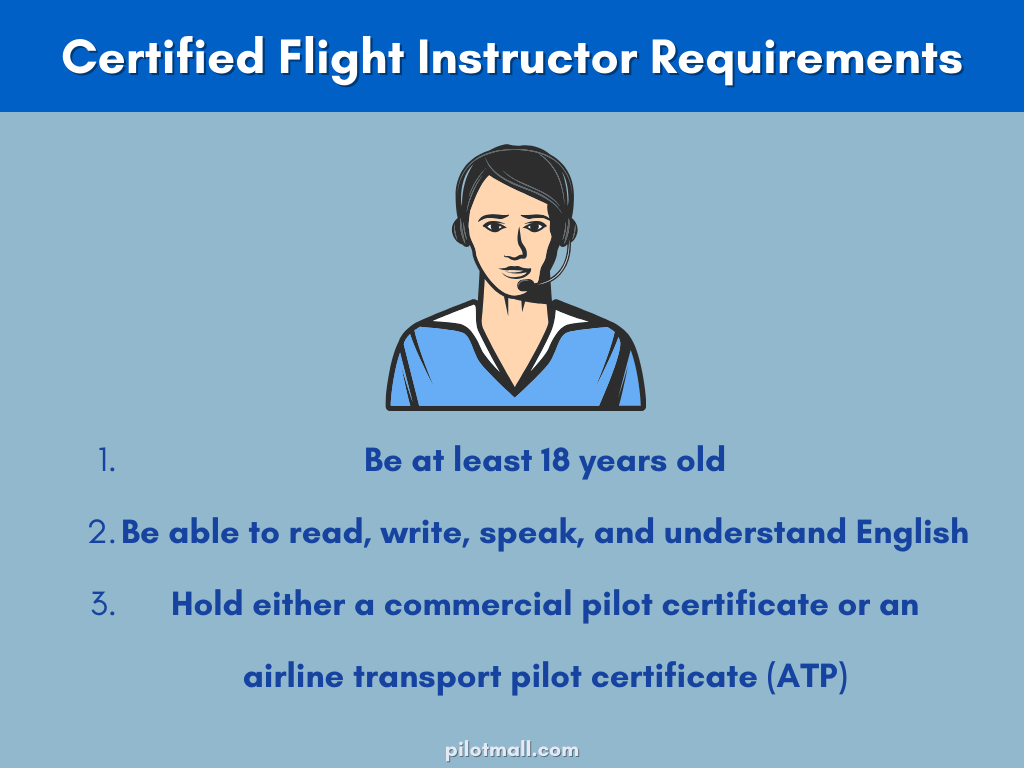
Certified Flight Instructor Requirements
To hold a Certified Flight Instructor certification, you must:
- Be at least 18 years old
- Be able to read, write, speak, and a strong understanding of the English language
- Hold either a commercial pilot certificate (CPL) or an airline transport pilot certificate (ATP)
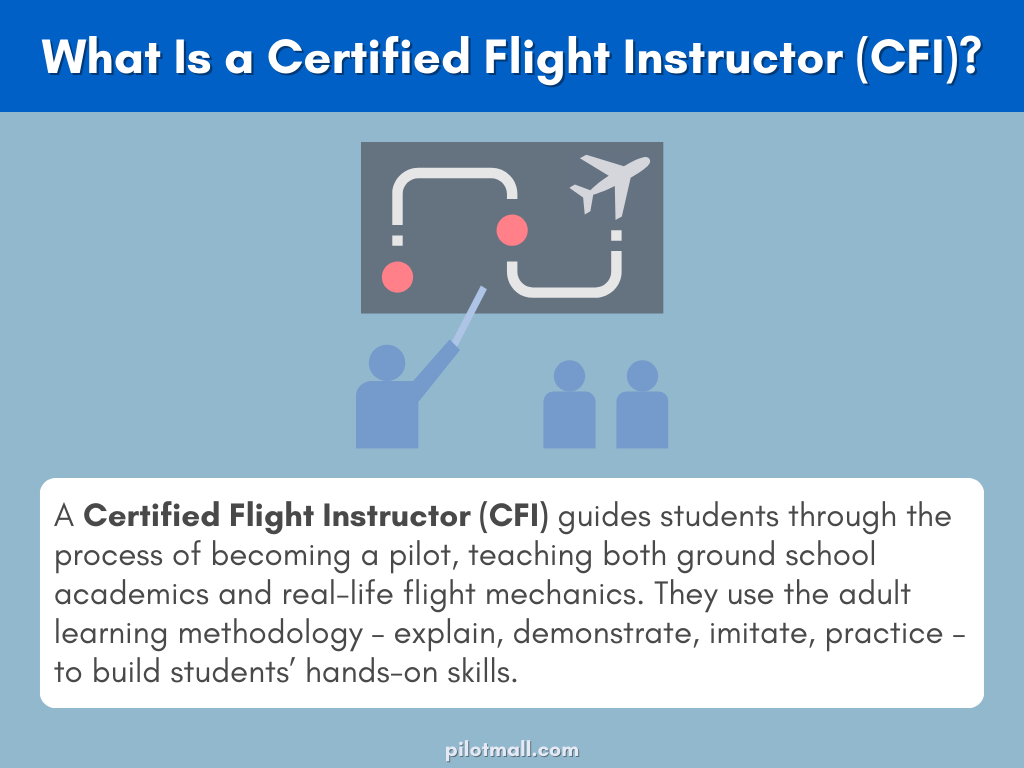 What Is a Certified Flight Instructor (CFI)?
What Is a Certified Flight Instructor (CFI)?
A Certified Flight Instructor (CFI) guides students through the process of becoming a pilot and keep them safe while doing it. They teach both the aeronautical knowledge areas with ground school and the mechanics of real-life flight (typically at a flight school or FBO).
Like a schoolteacher, an authorized Flight instructor CFI spends time outside the “classroom” developing lesson plans and preparing visual learning aids. The goal is to increase safety in how you teach students and to assist them in passing their knowledge exam and getting their pilot's license.
Keep in mind that many pilots recall their flight instructors as being considered role models when they were student pilots. Your actions have a big impact on their futures.
Pros & Cons of Being a CFI
Pros:- Enhances your own piloting skills
- Keeps you ahead of the airplane
- Allows you to share the joy of flight and mentor future pilots
- Accrue flight time towards ATP for low hour pilots
- Gain more right-seat experience
- Begin earning money
- Involves a lot of hard work day in and day out
- The transition from student to instructor can be challenging
- Dealing with lesson cancellations
- Less flight time left-seat
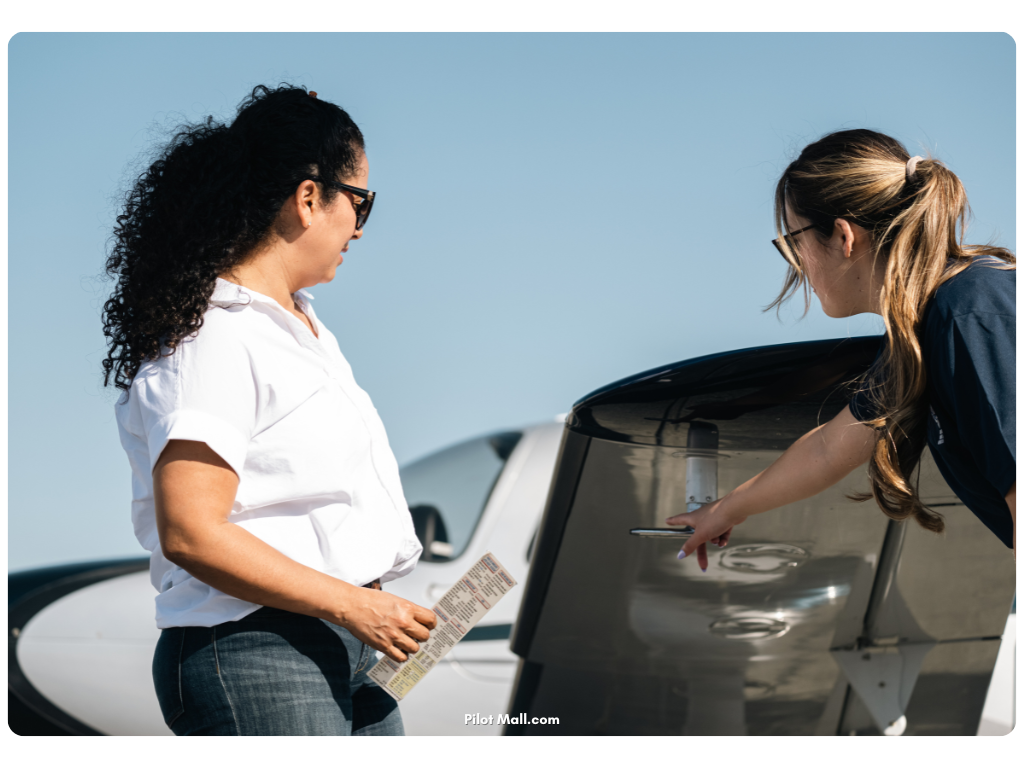 What Does a Flight Instructor Do?
What Does a Flight Instructor Do?
Responsibilities
Certified Flight Instructors (CFIs) develop lesson plans and use the adult learning methodology to build students' hands-on skills.
You will need to be comfortable teaching students of various ages from teens to adults and seniors. First explain how to execute a skill like flaring prior to landing.
Then you demonstrate the skill for the student and have the student imitate the skill (perhaps by talking you through the maneuver or mimicking your motions as you perform the skill).
Once the student has imitated the skill, you allow them to practice doing it while you coach and serve as a safety net.
Finally, once they are ready, you sign them off for solo flights and continue to serve as a ground-based mentor.
Teaching Methodology
- Explain: Describe the skill or maneuver.
- Demonstrate: Showcase the skill for the student.
- Imitate: Have the student replicate the skill.
- Practice: Allow the student to practice while providing guidance.
- Mentor: Sign off for solo flights and continue to serve as a ground-based mentor.
Earning Potential
Just how much can you expect to earn on the career path of being a CFI? Well, that depends on where you’re located.
According to ZipRecruiter’s most flight instructors earn between $50,000 and $73,000 with the average American Certified Flight Instructor taking home $65,870.
Want to know what your earning potential looks like in your current location (or decide if it would be worth it to relocate)? Use the “add location” function on ZipRecruiter’s Flight Instructor Salary page to view average salaries by state, city, or even zip code.
Are you ready for adventure and open to relocate to the flight school? Scroll through the complete state by state list of average hourly wage and annual salary for flight instructors.
Different flight schools will offer different hourly rates, make sure to ask your potential place of employment if they pay a certificated flight instructor a salary or only pay on a contract basis per flight hour with a student.
 Is It Hard to Become a Flight Instructor?
Is It Hard to Become a Flight Instructor?
Earning a flight instructor certificate is different from all the other pilot certificates you have gotten thus far because when you take your check ride, the examiner isn’t simply checking to see if you have the knowledge and skills necessary to be a safe pilot at the level you’re testing for.
This time they are more focused on whether you are a good teacher. You have already demonstrated your piloting abilities, but do you have what it takes to transfer that cerebral and practical knowledge to students in a replicable manner?
During your CFI check ride, the examiner will seek to answer these questions. This makes for perhaps the longest and most challenging check ride you have experienced.
Insights from a Flight Instructor
Ryan Huber, a flight instructor in Mesa, AZ, speaks on the truth about flight instructing and shares his personal experience. Ryan says that being a flight instructor is:
He says that the transition from student to instructor is challenging at first. Instead of having someone in the right seat to be your safety net, you are now responsible to be that safety net for your student.
Ryan highly recommends becoming a CFI saying that it makes you an exceptional pilot. Being a CFI:
Ready to take on this challenging yet rewarding career? Here’s how to get started.
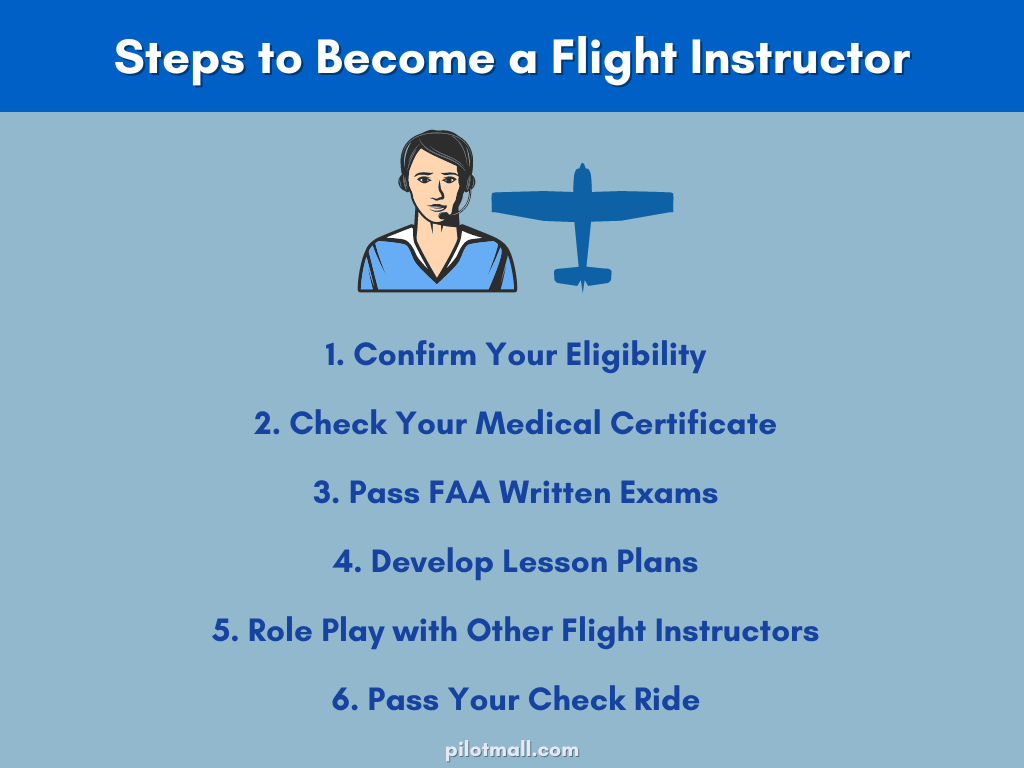 Steps to Become a Flight Instructor
Steps to Become a Flight Instructor
Are you wondering "How do I become a certified flight instructor?" We'll cover all the steps you need to know.
1. Confirm Your Eligibility
To hold a Certified Flight Instructor certificate, you must:
- Be at least 18 years old
- Be able to read, write, speak and understand English
- Hold either a commercial pilot certificate or an airline transport pilot (ATP) certificate
2. Check Your Medical Certificate
Since you have your commercial or ATP certificate, there should be no issues, but before you sign up for your CFI check ride, make sure you have a current medical certificate (either a First or Second Class Medical Certificate).
3. Pass FAA Written Exams
The CFI written exam is similar to others you have taken, just with a broader scope. It encompasses everything from the recreational, private and commercial levels.
You will also be taking a second written exam called the Fundamentals of Instruction (FOI). The FOI tests your knowledge of instructional topics like the learning process and training techniques.
4. Develop Lesson Plans
As a Flight Instructor, you need to create lesson plans that align with the FAA Practical Test Standards (PTS). The plans you develop now as part of your training and testing process can be used in the future, so put plenty of time and effort into them.
Consider your visual aids with your lesson plan and remember the power of a good chart, drawing, diagram or model to help you illustrate and explain a concept to your students. You'll want to help students learn how to pass their knowledge test and practical test.
Pro Tip: Review the Federal Aviation Administrations (FAA) Aviation Instructor’s Handbook and take note of the basic principles for how to become a good instructor.
5. Role Play with Other Flight Instructors
By the time you get to your check ride, you want to have developed confidence and ease with delivering your lesson plans and guiding a student through the learning process. Confidence comes with practice, so your CFI instructor will play the role of student.
They will have you practice instructing from sitting in the right seat where you will explain and demonstrate maneuvers, then coach and evaluate your “student.”
Pro Tip: To help you practice instructing a student, study the Airman Certification Standards (ACS), keeping in mind that this is primary resource you will be using to gauge your students’ level of preparation for their check rides.
6. Pass Your Check Ride
You’ve been through the check ride process plenty of times, so you know it can be an all-day event. Well, brace yourself because the CFI check ride is certainly an all-day event and may even turn into a multi-day event. There is simply a lot of information and a great many topics that your examiner needs to cover.
Denverpilot described it best in one of the Pilots of America forums:
During the CFI checkride, your examiner will be playing the role of student. Remember to give a thorough safety briefing and to explain each topic thoroughly and clearly. Pay attention to what your student is doing at all times and ensure that they are performing safe and legal maneuvers.
Above all, remain professional and engaging. Think back to your favorite flight instructors—the ones who knew how to explain a challenging topic or coach you through a tricky maneuver—and emulate them.
Remember that one of the most rewarding parts of being a Certified Flight Instructor is the chance to share the joy of flight and mentor the next batch of flight students.
Ready to take the plunge and become a flight instructor and become a valued member of the aviation community?
Improve your CFI training with our collection of Flight Training Material: Certified Flight Instructor.
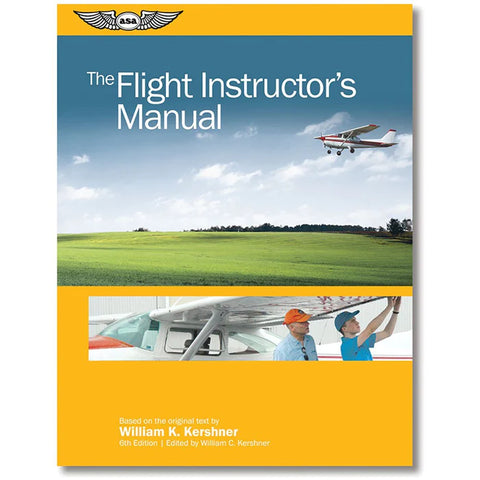
|
ASA The Flight Instructor’s ManualA comprehensive textbook and guide for flight instructors. Make good use of your CFI rating with a wide range of topics including the basics of instruction, teaching ground school, pre-solo training, teaching how to effectively operate aircraft for solo flights and obtaining a private pilot certificate. |
Interested in Aviation-based Careers?
Do you want to become a flight attendant? Or maybe work as an Air Traffic Controller? Our guides are designed to help!
- 20 Airline Pilot Interview Questions & Answers (+ Preparation Tips)
- A Day in the Life: What is a Pilot’s Schedule Really Like?
- 7 Most Lucrative Pilot Careers
- How to Become a Flight Attendant with No Experience (Guide)
- Acquiring an FAA Dispatcher License - Learn What it Takes
- How to Become an Air Traffic Controller [Do You Qualify?]
Did you find this article helpful?
Do you think we missed anything important about flight instructors? Let us know in the comments below!
























